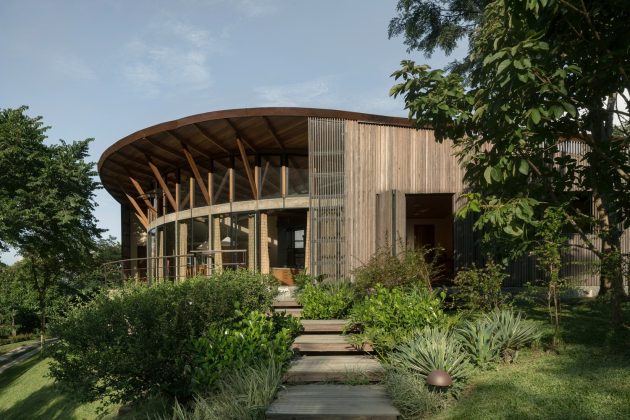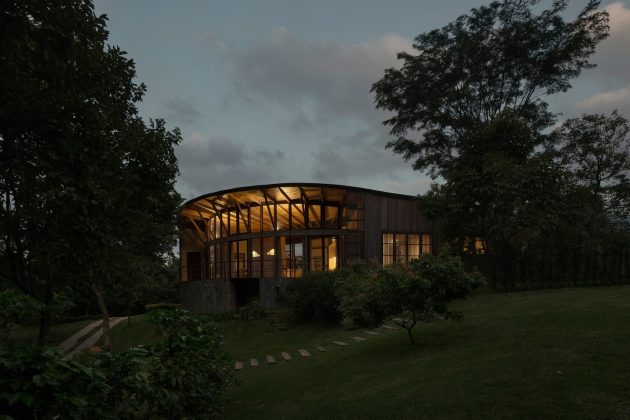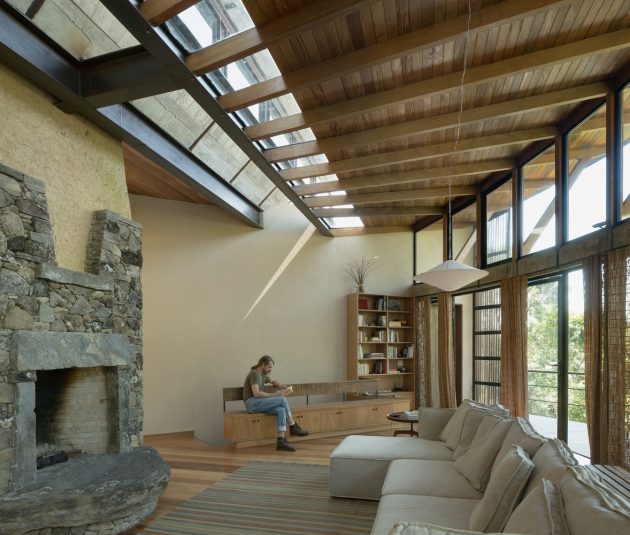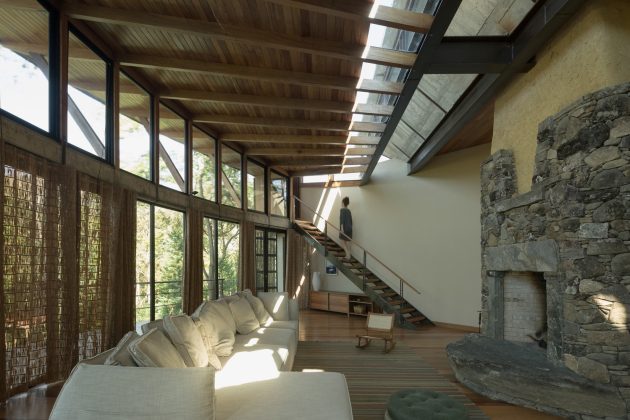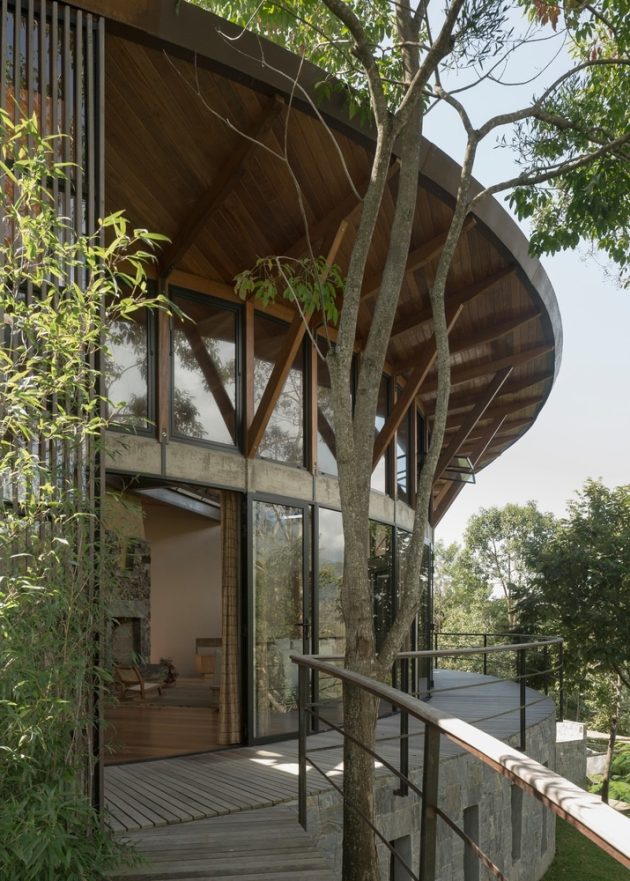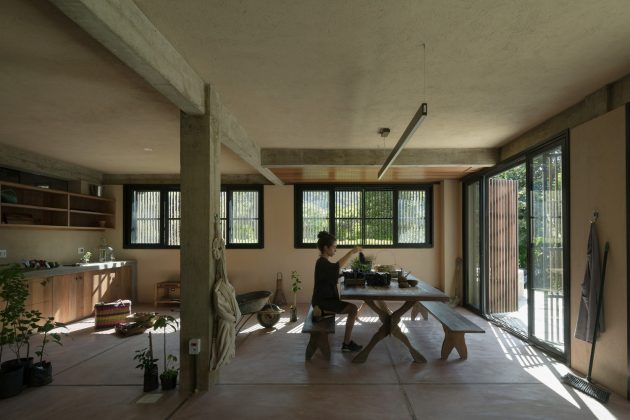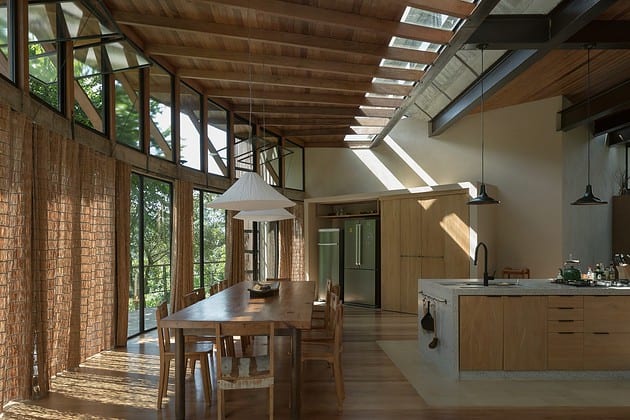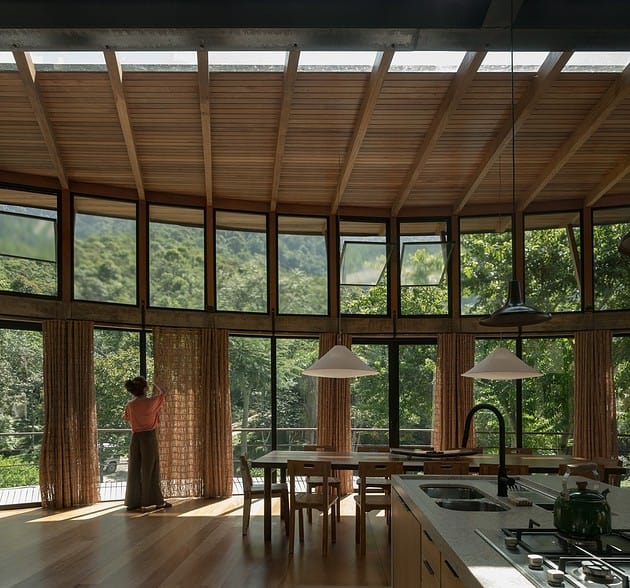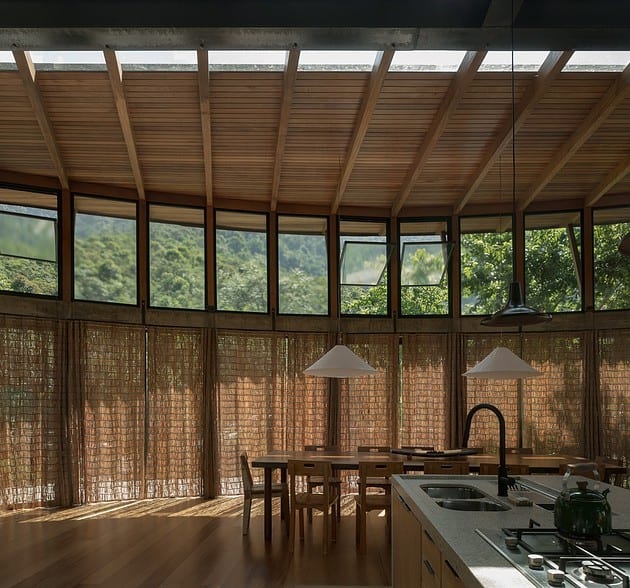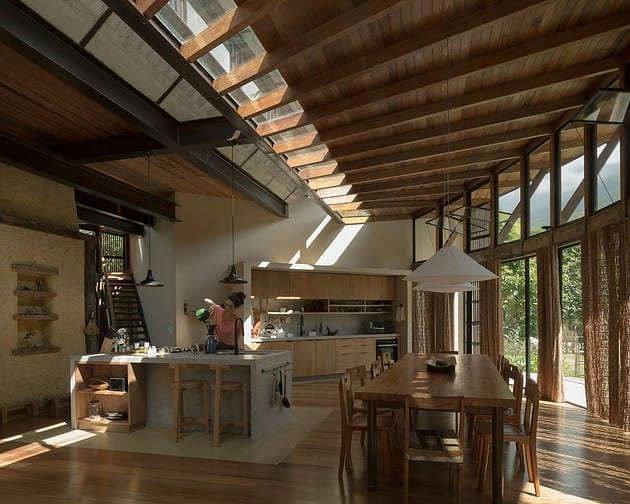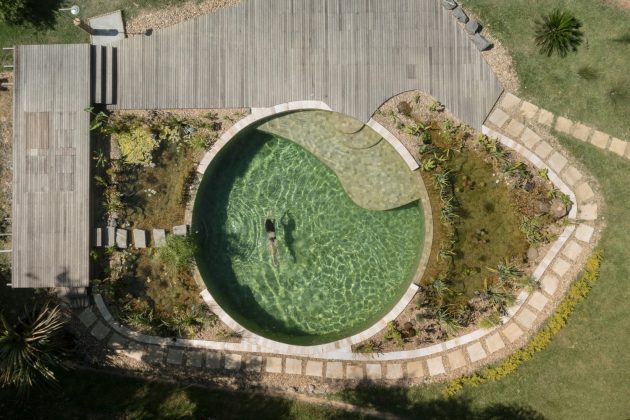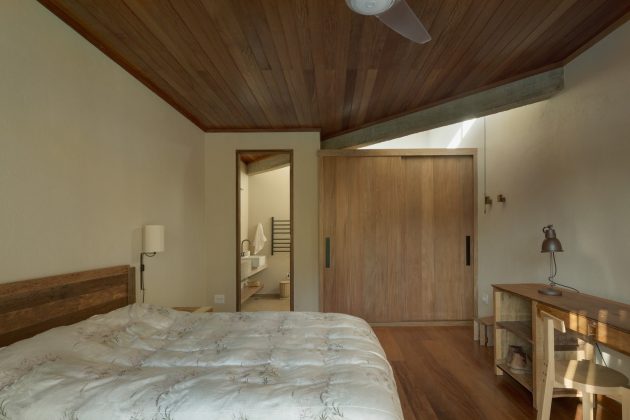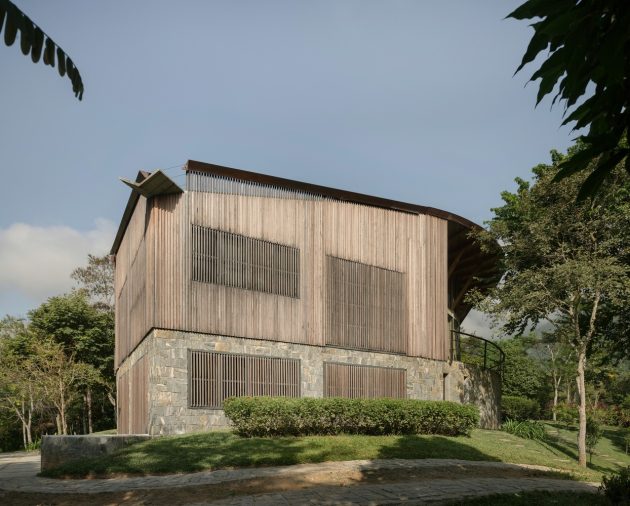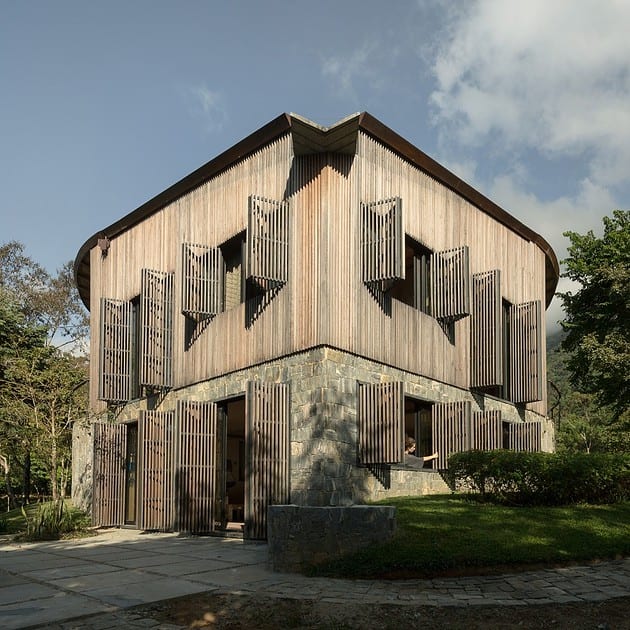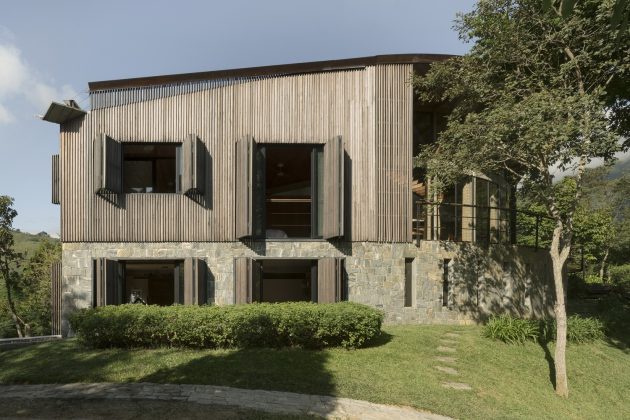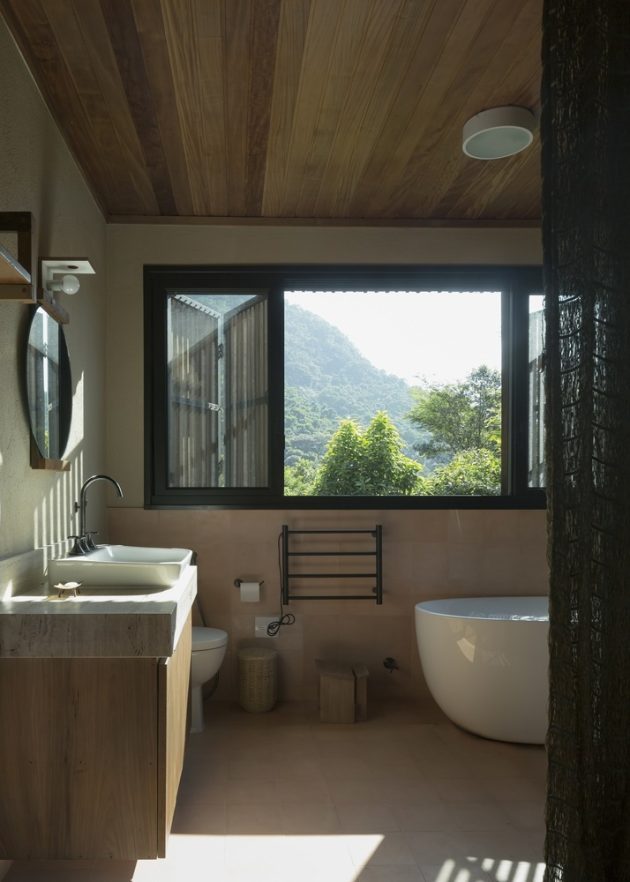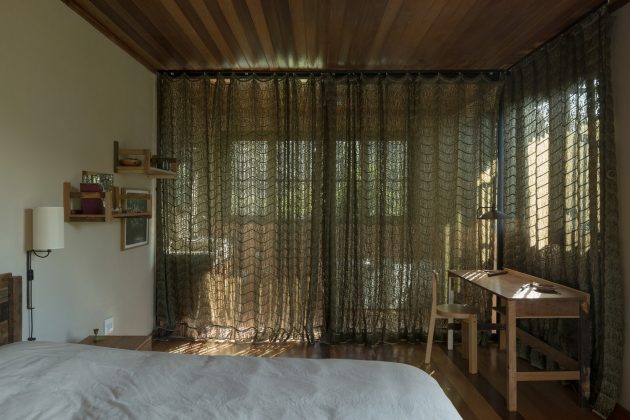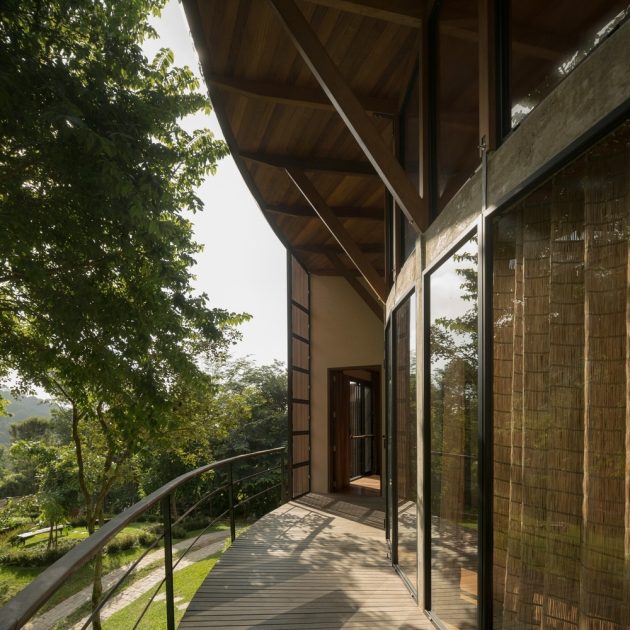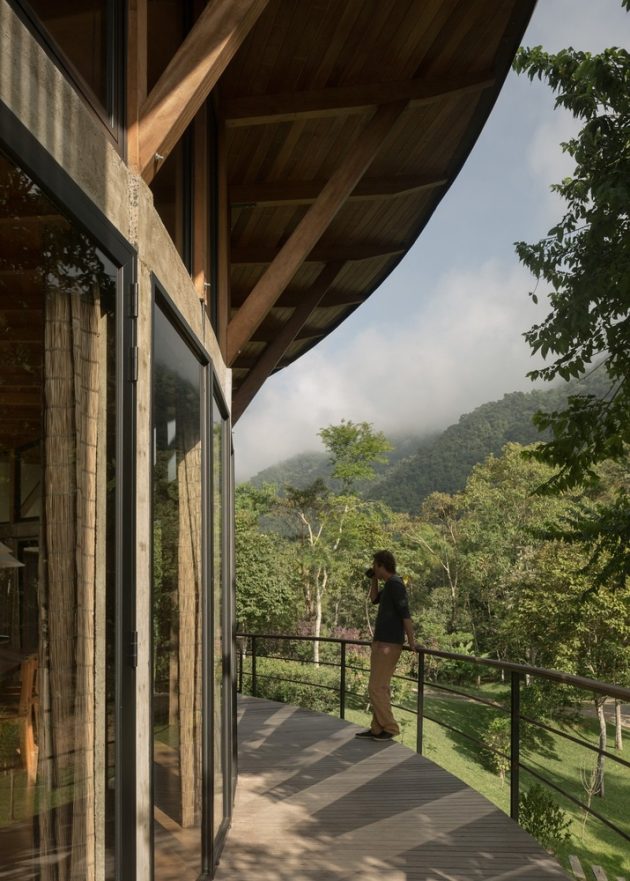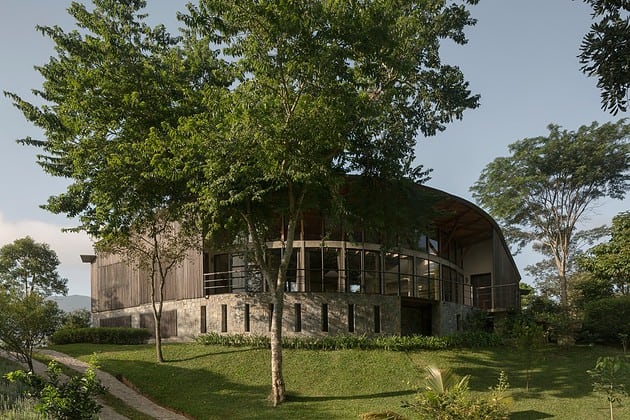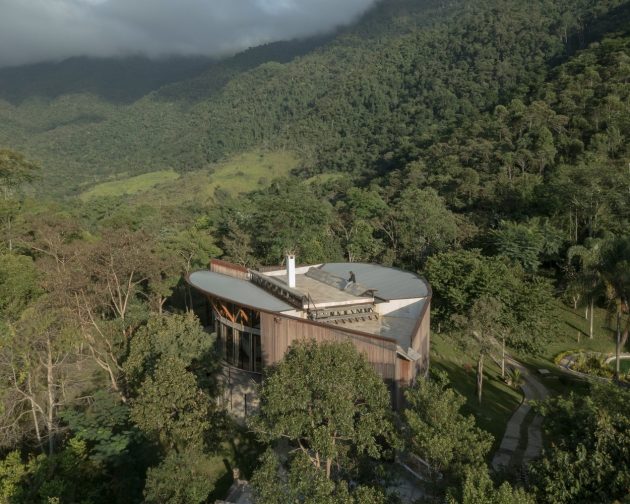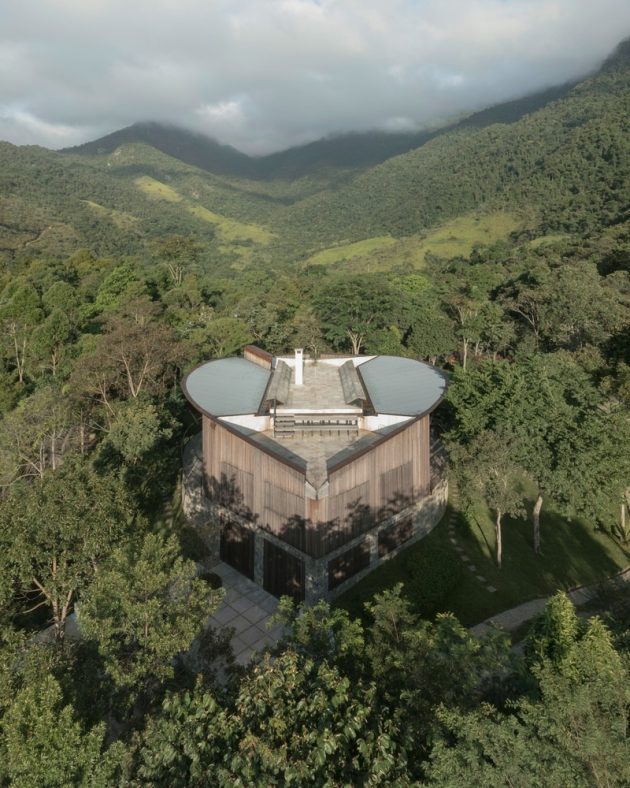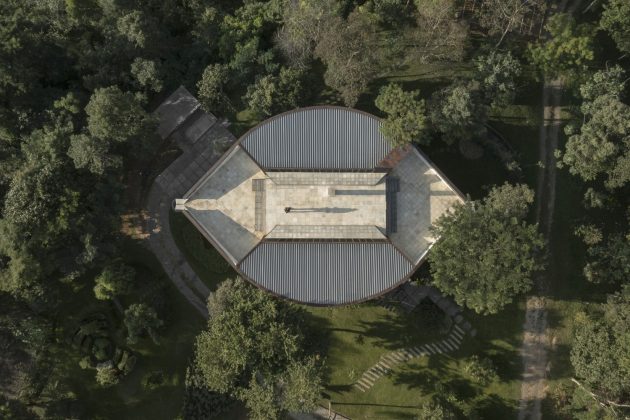Project: House in Bocaina
Architects: Ana Altberg + Cesar Jordão
Location: Bananal, Brazil
Area: 3.293 sf
Year: 2021
Photographs by: Federico Cairoli
House in Bocaina by Ana Altberg + Cesar Jordão
The Serra da Bocaina residence, nestled in Brazil’s Atlantic Forest, blends harmoniously with its lush surroundings. Its semi-elliptical form and earthy materials connect the interior to the exterior, respecting the delicate ecosystem. The radial design features squares for bedrooms and a central common area with a stunning fireplace. Three terraces offer panoramic views and clever lighting patterns. The house captures rainwater in an embedded cistern and uses permaculture techniques for sanitation. Sustainable wood and reclaimed materials were used in construction. Over time, the wood facade ages gracefully, forming a protective shell around the interior core.
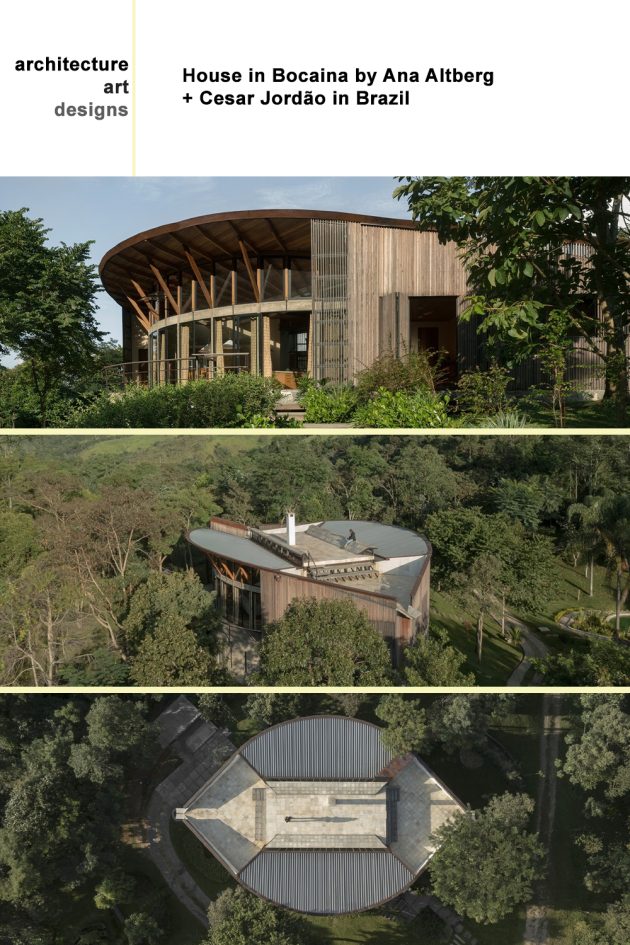
Since the first visit, we were greatly impressed by the power of Serra da Bocaina, just like the client who requested a house that “embraced the landscape.” After many studies and conversations, in order to interpret this desire, we arrived at a curved form that seeks to incorporate the exterior into the interior of the house in a panoramic manner. With this semi-elliptical object, clad in materials familiar to the forest, we aim to soften the boundaries between the construction and its surroundings, establishing an architecture that positions itself respectfully in this delicate ecosystem. The challenge of negotiating common and private spaces within a circular form led us to examine other architectural references, vernacular constructions, and community spaces that have a deep connection to their environment. This path also led us to reflect on residential typology, mimicry, and context; on “comfort” and “contemplation of nature”; on the time scale of a construction and the intensity of its footprint on the ground.
In search of the circular house, within a space enclosed by many trees, we ended up finding the intersection of two arches where we situated the project. Two squares, separated and rotated 45 degrees, are connected by curves, housing the common space between them. In the squares, rationalized spaces are preserved for four suites, accessed from the exterior of the curved balconies. In the residual and transparent space, the common area includes the living room, kitchen, and fireplace. This radial design converges towards the magnetic core of the house: the fireplace constructed by Lew French using materials collected from the region. Simultaneously, this core opens up to the exterior, endorsed by the inverted roof that brings the mountain peaks inside the house. The tropical forest can be contemplated from within a protected interior, shielded from its wildlife. Artificial lighting is minimal, with soft light accents forcing us to recalibrate our vision at night, causing less disturbance to the life that resides outside. During the day, the house faces outward; at night, it looks inward, shaping a womb-like space around the fireplace.
The three terraces, aligned on the east-west axis, serve as platforms for panoramic views of the mountains and stars. During the day, the white stone flooring deflects the heat of the sun, and at night, it illuminates the space by reflecting the moonlight. The central terrace’s slab bends to allow indirect light into the interior of the house, beneath the inverted roof. The project’s diagonals create unexpected patterns of light that dance through the house throughout the day. The upper terraces are connected to the arches on the north and south facades and are capped by V-shaped mirrored gutters, which funnel and direct rainwater from over 300 square meters of roof to the wells. Although it’s not advisable to be outside during a tropical storm, this is when the house showcases its greatest attraction, and its ends become two torrential waterfalls.
The Serra da Bocaina is one of the largest protected areas of the Atlantic Forest in Brazil, located on the border between the states of Rio de Janeiro and São Paulo. This region is a segment of the Serra do Mar, a mountain range that stretches for approximately 1,500 kilometers along the southeastern coast of the country. These mountains are home to a rich biodiversity, including endemic and endangered species such as the jaguar. We aimed to build a house in this location without saturating its soil and to establish a balanced relationship with the preservation of this and other landscapes, considering that some elements needed to come from elsewhere. The region is still abundant in water, but the escalation of climate change has brought periods of drought and wildfires. Therefore, we created an embedded cistern to capture rainwater with a capacity of 45,000 liters. The entire sanitation system of the house was implemented using permaculture techniques such as the ET bed (evapotranspiration bed) and the banana circle, ensuring that the soil remains uncontaminated and that wastewater is transformed into nutrients.
The structure of the house is a combination of materials. The blocks of the suites and the foundation are made of reinforced concrete. Inside, steel beams connect the square blocks and support the terraces’ slabs and the wooden roof structure. There was a significant concern about the source of the wood, given the high deforestation rates in the country in recent years. All the wood used for the structure, facade, floors, and roof lining comes from sustainable forestry management, and all the carpentry is made from reclaimed materials. The wooden slats on the facades serve a thermal function and create a protective envelope around the masonry, which can open and close like shutters for the rooms. In addition to the sunshades, natural fiber curtains surround the interior spaces, functioning as an additional layer and a light filter for the house. The wood used on the facades is Itaúba, which, in the indigenous Tupi language, combines the words “stone” and “wood.” Its natural resin gradually burns and seals the wood exposed to the sun, making it increasingly hard and gray over time. As time passes, the house also ages, and its exterior becomes increasingly stone-like, forming a tough shell around a soft and protected core.
